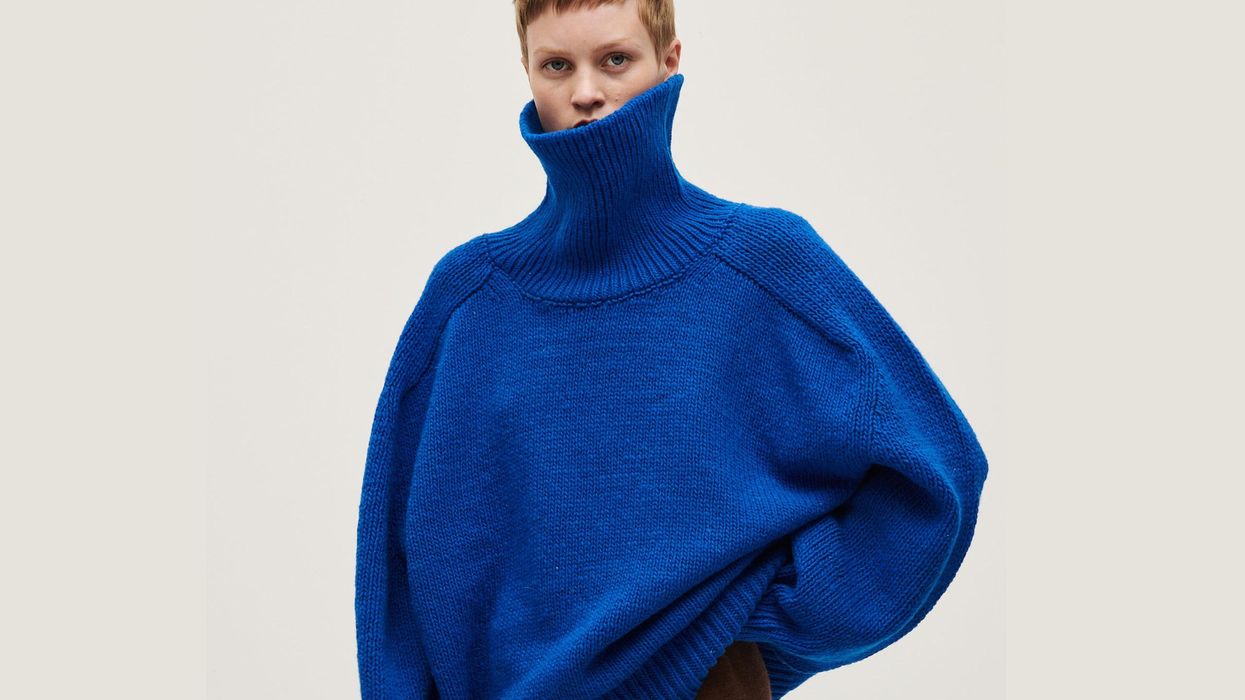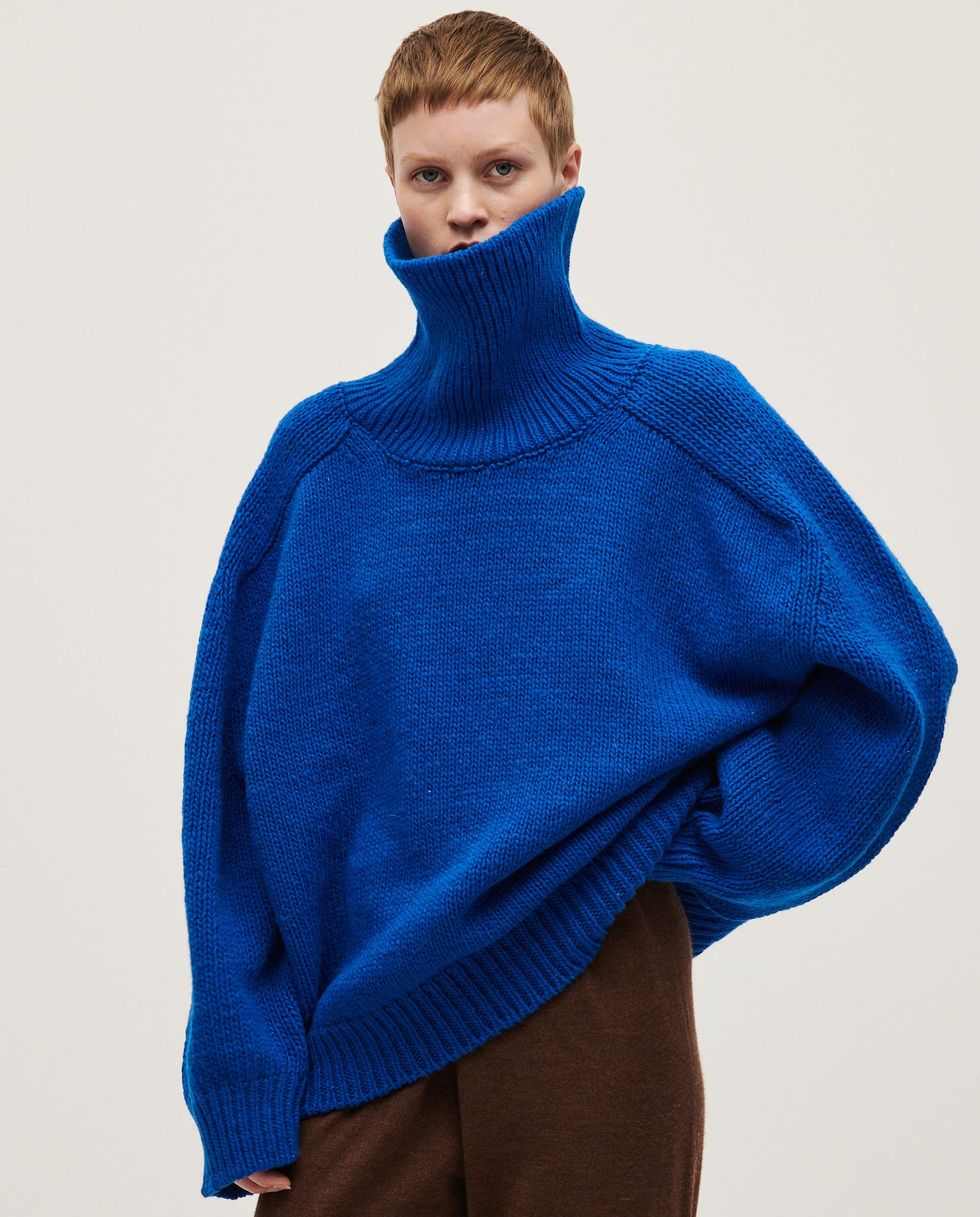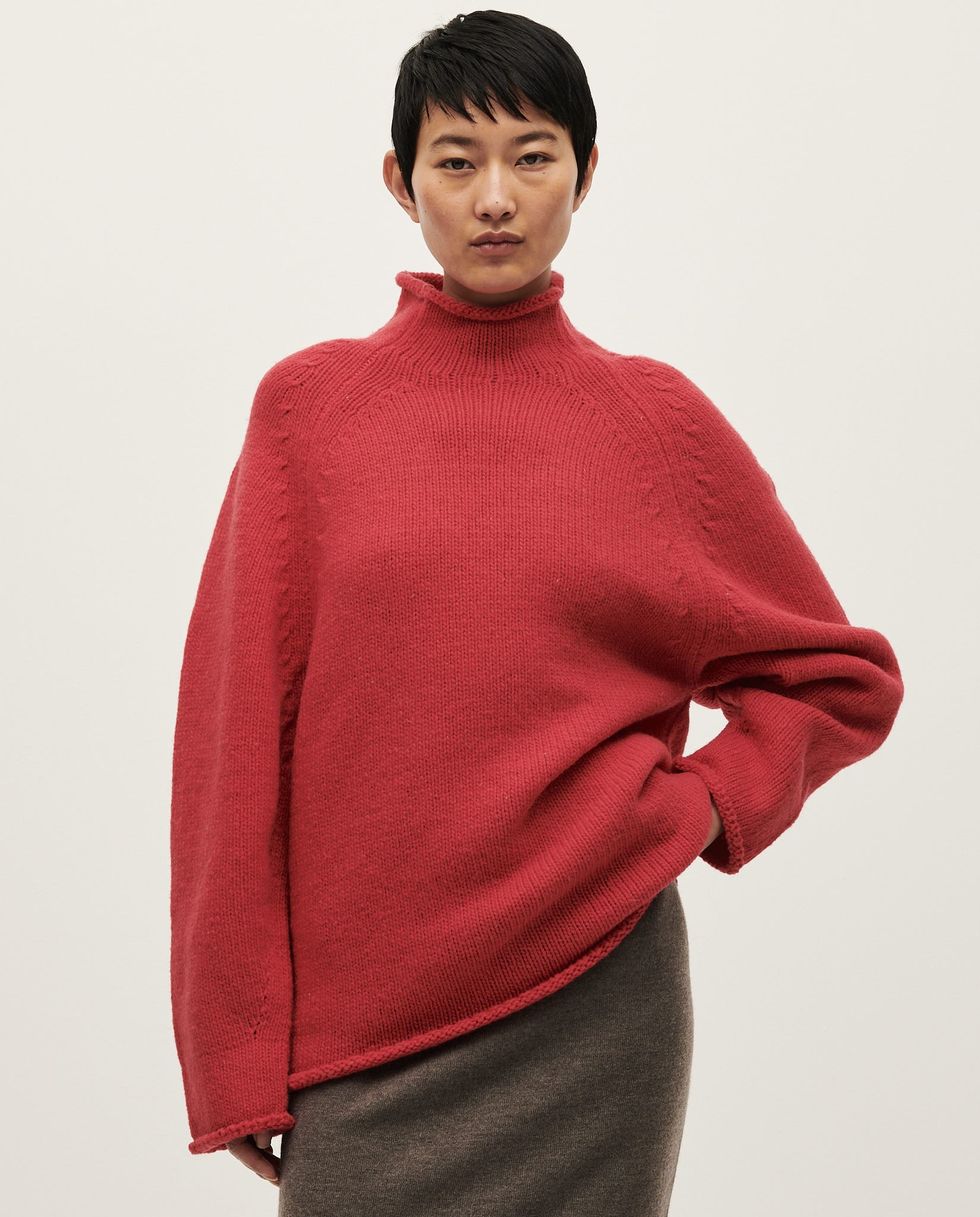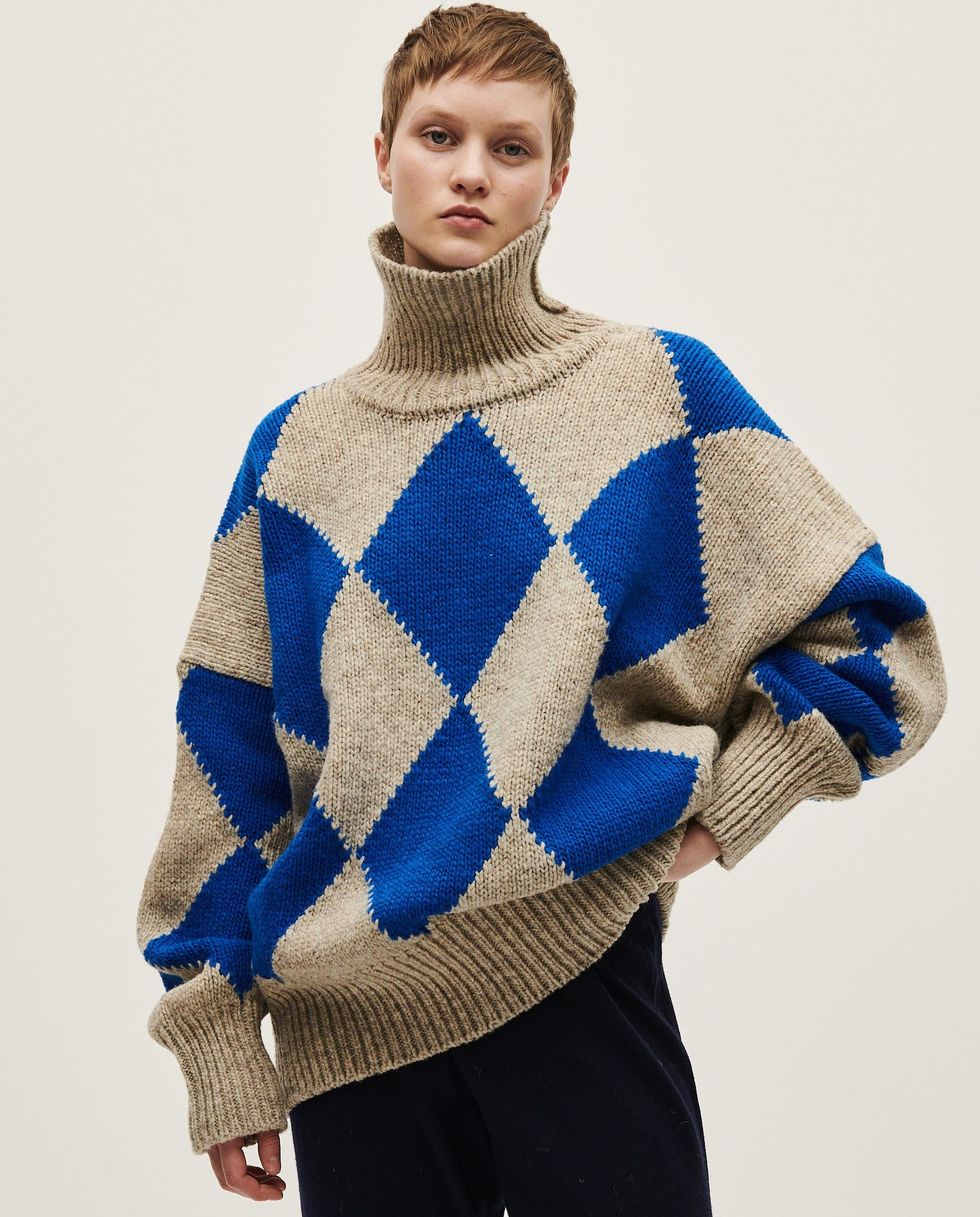Babaà Sweaters Are the Latest IYKYK Casual Fashion Status Item
Breaking down the appeal of the cult-worthy sweaters.

Find yourself in the St. Luke’s school pickup line after a midday coffee in the West Village or walk past Salter House on Atlantic, and you’ll notice a certain continuity threaded through the patrons’ knitwear. These one-size-fits-most beautiful blobs of hand-knitted wool and cotton, for the uninitiated, might just seem like any old sweater. But to the trained eye of a casual fashion consumer, babaà sweaters join the ranks of High Sport pants and Vibi Venezia mary janes as the latest IYKYK status items.
Over a decade ago, Marta Bahillo took her degree in Fashion and Textile Design from Dublin, Ireland back to her hometown of Spain to start babaà. Now, the family-fun factory in Barcelona operates on a wholesome adoration of natural fibers and inherited expertise. Each babaà piece is knitted on a Japanese knitting machine and assembled by a team of local women practiced in the art of textiles with cotton grown in nearby fields. Sheep bleat happily as their wool goes on to live happy lives on the backs of makers in Maine—we’re all thinking it, so I’ll just say it, Julie D. O'Rourke—and artists in Manhattan—Francesa Wade goes for “vintage Levi’s 501s, Birkenstock clogs with socks, a t-shirt, and babaà,”—alike. The story, from mill to recyclable mailer, feels like a storybook, and it’s hard to deny the wholesome effect the process has on the final garment.

Curious and maybe a little skeptical, I unwrapped my first babaà sweater a week ago at my kitchen table. Two lovers of the brand had written to me about the charm of spotting flecks of hay in the sweaters upon unboxing. To my surprise—and despite an upbringing in the agricultural heartland of the country—I was wooed. Delighted by the sleeve length, I slipped the sweater on,, where it remained, save showers and sleep, for the next two days.
There’s more to the brand than fantastic sweaters. Some, like fashion-focused Brooklynite Ariel Levin, take spotting a babaà as a sign. “[My current boss wore one during my first interview with her, paired with Rachel Comey earrings,” Levin recounts. “It was a sign, among others, that I knew I wanted to work for her. Once I got that job, I bought my first one after having it on my wishlist for probably about two or three years.”
The price—sweaters range from around 250-300 euros—seems a consistent hurdle, even among collectors of the brand. But all it took was physical contact for Toronto-based Tess Gigone to be convinced this was money well spent. “As soon as I had one in my hands (and on my body) I realized how worth it they are. And the addiction started.” Emma Holland, a consultant and recruiter, recalls two worries: one shared and the other the polar opposite of my own. “I think I was a bit nervous it would be itchy—the frequent worry of all sweaters—and that it wouldn't fall right on me, a measly 5'2” frame compared to the long-limbed women in most of the most inspirational photos.”
Some babaà styles run cropped. Others veer into borderline-tent territory. The brand makes trousers, dresses, and bags, too, but it’s the sweaters that draw a cult of like-minded consumers. Olivia Villanti, founder and designer of Chava Studio, is an advocate for the brand’s cotton styles—perfect for her life in Mexico City. “In NYC, I used to struggle with sweaters because they always felt too cold or too hot (too hot under a coat, too light when it's really frigid).” Relatable.
In a rush to a breakfast date at Buvette, I contemplated a jacket over my new babaà sweater, the one I’d taken to like a second skin, but ran out the door with a baseball hat and umbrella instead. The wool proved hot on the subway, ideal on the walk down Grove Street, and cozy at our tiny two-top table.
Rachel Cusack, who works in crypto media and was introduced to babaà via a gift from a very smart mother-in-law, has “converted almost every person in my life into a babaà patron.” She notes that only the sweaters’ cuts and colors are classics; it’s their quality that makes them heirloom-worthy.
And come to think of it, people affix themselves to causes and cults far less reasonable than beautifully woven sweaters from a Spanish designer putting quality goods into the world. My collection is only two-deep at the moment, but I can’t wait to nod in the direction of the next babaà-sporting person I see, proud to call myself a fellow knitwear evangelist.
Want more stories like this?
Liza Koshy Takes On Her First CFDA Awards in Bach Mai & 8-Inch Heels
This Fashion Founder Proves You Don’t Have to Sacrifice Style in the Face of Frigid Winters
Our Guide to Styling Tall Boots







